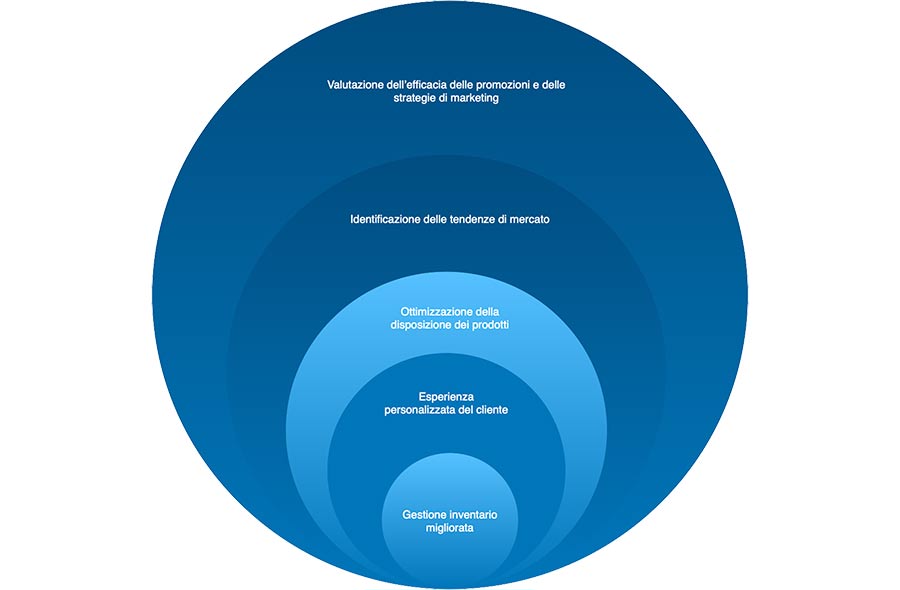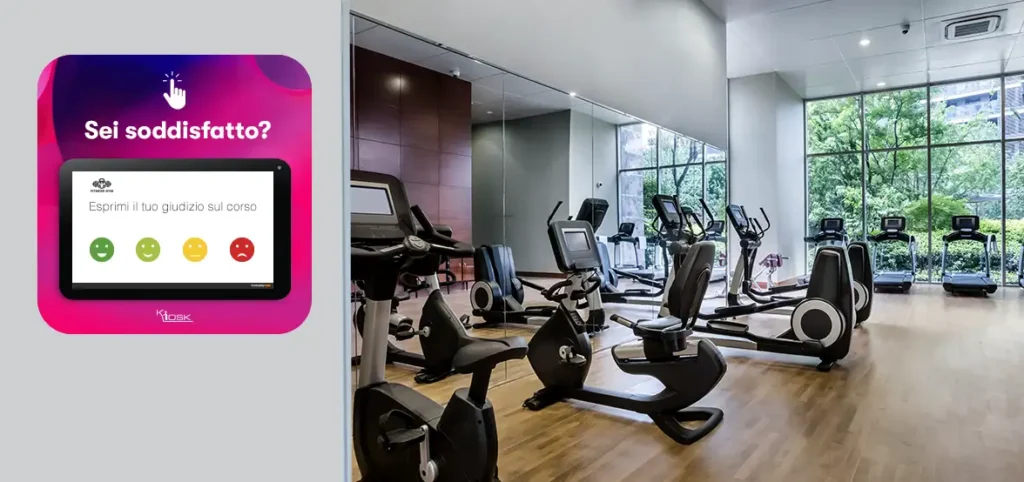In the retail landscape, Data Analysis or Data Analysis emerges as an unrivaled power tool, capable of amplifying customer satisfaction and triggering long-term growth. However, while many brands recognize the importance of data collection, many still find themselves wondering how exactly to adapt analytics to the retail context in order to take full advantage of its benefits.
In this article, we will take you through an in-depth analysis of the use of Data Analytics in the retail sector, enabling you to capture the maximum possible impact and achieve lasting results over time.
Data Analytics plays a vital role in improving the performance of a retail store. It enables you to gain an in-depth understanding of your operations, customers and sales trends, thus helping you make informed decisions to optimize efficiency and increase revenue.
Let’s look at some ways you can use business analytics in retail to improve the performance of your store:
- Sales and Trend Analysis: Monitor sales and analyze historical trends to identify which products are selling high and which are not performing well. This will help you make informed decisions about stock and product placement.
- Customer Segmentation: Use customer demographic and behavioral data to divide your customers into segments. This will allow you to customize offers and promotions for each group, increasing the effectiveness of your marketing efforts.
- Inventory Management: Use analytics to optimize inventory levels. Identify which products are running out and which are overstocked. Maintaining a balanced inventory avoids losses due to obsolete products or insufficient stock.
- Store Analytics: Monitor checkout performance and sales activity at the store. Identify peak times and areas of the store that attract customers’ attention the most. This can guide the placement of products and personnel.
- Customer flow analysis: Use tools like surveillance cameras and sensors to analyze the flow of customers in your store. This will help you optimize your store layout to maximize customer experience and sales opportunities.
- Staff Performance Tracking: Track individual sales and staff performance. This can reveal who your best salespeople are and who may need further training.
- Promotion Analysis: Evaluate the effectiveness of promotions and special offers. This will help you understand which promotions are attracting more customers and generating additional sales.
- Online and Offline Data Analysis: Integrate data from both sources, if applicable. For example, if you have an online store in addition to a physical store, analyze your online and offline sales so you have a complete view of your overall performance.
- Customer Feedback: Use customer feedback collected through surveys or reviews to get insights on how to improve the customer experience and product offering.
- Seasonal Planning: Use past performance analysis to pre-plan seasonal strategies, such as holiday promotional campaigns.
Ultimately, business analytics in retail can provide valuable insights for data-driven decision making that can increase operational efficiency, improve customer experience, and increase overall store sales.
5 Benefits of Using Retail Analytics
Using retail sales analytics offers many benefits that can significantly contribute to the success and optimization of a store’s operations.
Here are five key benefits:
- Improved Stock Planning and Inventory Management: Sales analytics help you get a clear view of past and present sales trends. This helps you make more informed decisions about the quantity and type of products to stock. You can avoid overstocking or understocking, thereby maximizing inventory efficiency and reducing costs associated with capital immobilization.
- Personalization of customer experience: Sales analytics can help identify customer behaviors, preferences and buying patterns. This information allows you to offer a personalized experience, suggesting related products or targeted promotions that increase the chances of conversion. This personalization can improve customer loyalty and overall customer satisfaction.
- Optimize product layout: By analyzing customer flow and sales data, you can determine which areas of your store attract customers’ attention the most and generate more sales. This information can guide the strategic placement of products, placing the most popular items in positions of greater visibility and potentially increasing cross-selling.
- Identifying Market Trends: Sales analysis can reveal emerging trends in customer buying patterns. These trends can be related to seasons, events or cultural changes. Identifying these trends early allows you to quickly adjust your sales strategy and capitalize on emerging opportunities.
- Evaluation of the effectiveness of promotions and marketing strategies: Tracking sales during promotions and marketing campaigns allows you to evaluate the effectiveness of these initiatives. You can determine which promotions drive a significant increase in sales and which may need to be adjusted. This data-driven approach helps you optimize your marketing efforts and maximize your return on investment.
Overall, retail analytics offers a comprehensive view of store performance, helping you make data-driven strategic decisions to improve operational efficiency, increase revenue, and deliver a more engaging customer experience.
How can a retail business measure customer satisfaction?
Measuring customer satisfaction is key to evaluating the effectiveness of your retail operations and identifying areas for improvement. Here are some methods and tools a retail business can use to measure customer satisfaction:
- Post-Purchase Surveys: After customers make a purchase, you can send them a survey via email or physical receipt. Ask them to rate the overall experience, the courtesy of the staff, the quality of the products, the waiting times, etc. Use multiple choice questions or ratings on a scale to collect quantitative data.
- Online Reviews: Monitor customer reviews on your websites, e-commerce platforms, and external review platforms such as Google, Yelp, TripAdvisor, if applicable. Analyze positive and negative comments to identify strengths and areas for improvement.
- Social media: Monitor the company’s social media channels to gather customer feedback and comments. Social platforms offer a place where customers can share opinions in real time.
- Customer Service Calls: Log customer service calls and analyze customer feedback during phone interactions. This can help you understand the challenges customers are facing and how they can be resolved.
- Mystery shopping: Use “mystery shoppers” to experience the shopping process in your store. These people pose as customers and evaluate the experience from the inside. This approach can provide an objective opinion on the strengths and weaknesses of the customer experience.
- In-Store Feedback: In-store, you can have point-of-sale terminals or devices where customers can provide instant feedback. You can also have suggestion boxes where customers can post comments anonymously.
- Loyalty Programs and Loyalty Cards: Monitor the use of loyalty cards and loyalty programs to gain insights into customer buying behavior. You can use this data to evaluate how many customers return and which products they prefer.
- Online metrics analysis: Analyze tracking data on your website and e-commerce platform. Measure average session length, bounce rate, and conversion rate to get an idea of how users are interacting with your site and if they can find what they’re looking for.
- Focus Groups: Organize focus groups with a select group of customers to get detailed feedback. This can be especially useful for gathering feedback on new products, marketing initiatives, or store changes.
- NPS (Net Promoter Score): Ask customers how likely they would be to recommend your store to friends or family on a scale of 0 to 10. This measure gives you a general indication of customer satisfaction and loyalty.
By integrating different feedback collection methods, you can gain a more complete view of customer satisfaction and identify areas where improvements need to be made.
How to use data analytics in retail
Data analytics plays a crucial role in retail, as it helps make informed decisions, streamlining operations and improving overall performance. Here’s how you can use analytics in retail:
- Customer Segmentation: Use customer data to segment customers based on criteria such as age, gender, geographic location, buying behavior, and preferences. This segmentation allows you to tailor offers and promotions in a more targeted way, improving the effectiveness of your marketing strategies.
- Demand Forecasting: Use historical data analysis to predict future demand for your products. This helps you manage inventory more accurately, avoiding overstocking or understocking.
- Sales and Trend Analysis: Monitor daily, weekly and seasonal sales to identify trends and patterns. This helps you make informed decisions about product placement, promotions, and inventory planning.
- Price optimization: Use data analytics to understand how prices influence sales. You can adjust pricing based on demand, competition, and other factors to maximize profits.
- Online behavior analysis: If you have an online store, analyze visitor navigation data to understand how they interact with the site, what products they view and where they might leave the purchase process. This can drive website changes to improve conversion.
- Store layout management: Use data such as customer flow and navigation patterns within the physical store to optimize the layout. Place the most popular or related products near the items that attract customers’ attention.
- Product Lifecycle Analysis: Follow the life stages of your products, from introduction to decline. This helps you manage your product lifecycle more effectively, introducing new products when needed and retiring those that are losing popularity.
- Promotion Effectiveness Analysis: Evaluate sales performance during promotions and special offers. This helps you understand which promotions work best and optimize future marketing efforts.
- Customer Satisfaction Measurement: Analyze data from customer surveys, reviews and feedback to gauge customer satisfaction and identify areas for improvement.
- Marketing strategy planning: Use data to develop more targeted and personalized marketing strategies, thus increasing the effectiveness of your campaigns.
- Staff Performance Tracking: Track salespeople and staff performance based on sales and results. This can help you recognize top performers and offer training to those who need to improve.
Conclusions
Deciphering the intricate facets of product feature analytics and relating relevant in-store data to customer preferences enables retailers to shape engaging shopping experiences that resonate with their audiences. This, in turn, fuels improved relationships with existing customers and nurtures their loyalty.
The ability to gather data from multiple sources and amalgamate information from different channels offers a holistic view of customer interactions and preferences. Through the use of predictive statistical models and advanced analytical methodologies, companies can anticipate future trends and make strategic choices that will drive growth over an extended time horizon.
With a platform like Kiosk Emoticon, surveys can be created and modified on the fly: immediately ready and active to collect data and allow analysis on the various touch points of the customer journey.
 | Do not waste time. Schedule a live demo.Take advantage of data analytics to anticipate trends and make strategic decisions for long-term growth. Book a live demo and find out in detail. |
 |
Do not waste time. Schedule a live demo.Take advantage of data analytics to anticipate trends and make strategic decisions for long-term growth.
|





